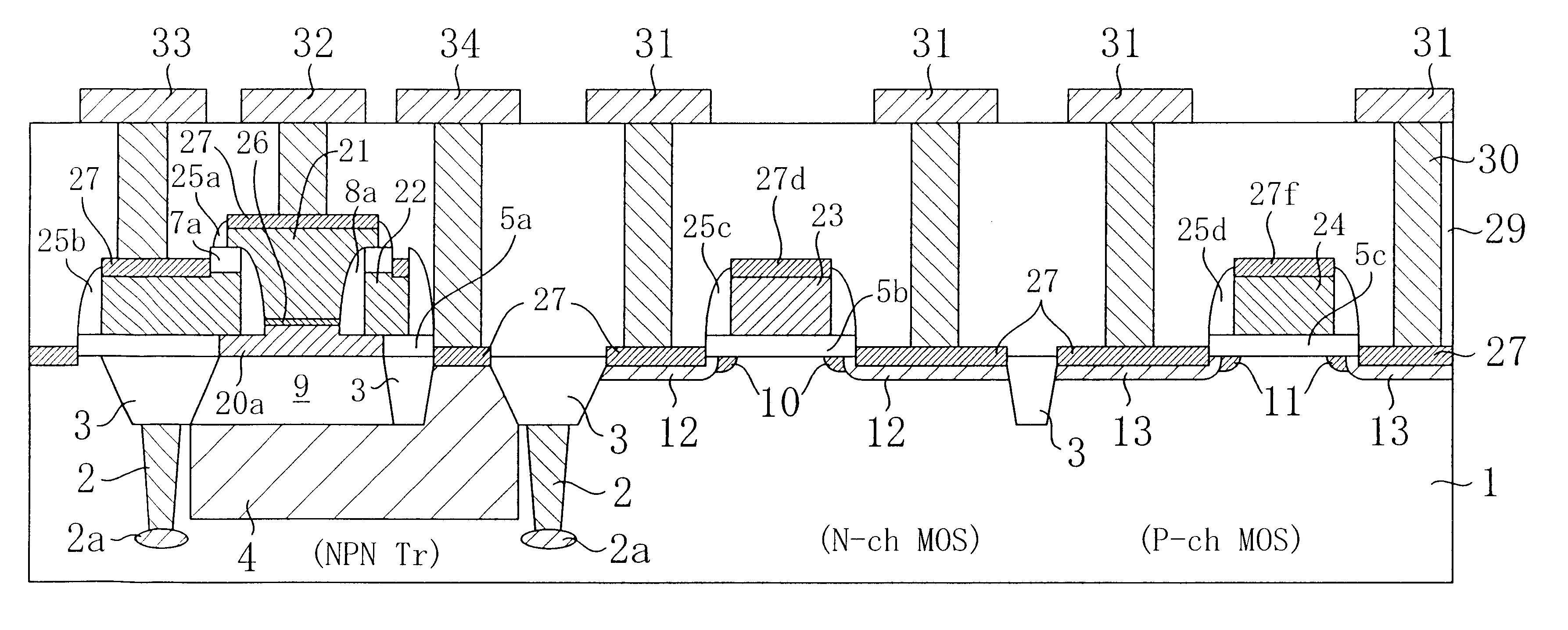Semiconductor device and method for fabricating the same
a technology of semiconductor devices and semiconductor layers, applied in semiconductor devices, electrical equipment, transistors, etc., can solve the problems of difficult control of the thickness of the p.sup.+-type single crystal silicon layer to be electrically connected to the polysilicon for base extended electrodes, the number of process steps and the increase of the fabrication cost, etc., to achieve the effect of reducing the thermal budget after the deposition of the sige layer, reducing the number of steps of the bicmos process
- Summary
- Abstract
- Description
- Claims
- Application Information
AI Technical Summary
Benefits of technology
Problems solved by technology
Method used
Image
Examples
Embodiment Construction
4
FIG. 18 is a cross-sectional view illustrating a structure for a BiCMOS device according to a modified example of the fourth embodiment. The structure of the BiCMOS device shown in FIG. 18 is basically the same as that of the BiCMOS device of the first embodiment shown in FIG. 1. Accordingly, the same members as the counterparts shown in FIG. 1 are identified by the same reference numerals as those used in FIG. 1 and the description thereof will be omitted herein. This embodiment is the same as the fourth embodiment in that the base layer 41 is made of SiGeC single crystals but different from the fourth embodiment in that the thickness of the base layer 41 is about 20 nm and is thinner than the first insulating film 5a. In this case, the thickness of the first insulating film 5a is about 50 nm, which is considerably thicker than the gate insulating films 5b and 5c with a thickness of 7 nm for the MIS transistor block.
Even in such an embodiment, by adjusting the composition of the S...
PUM
 Login to View More
Login to View More Abstract
Description
Claims
Application Information
 Login to View More
Login to View More - R&D
- Intellectual Property
- Life Sciences
- Materials
- Tech Scout
- Unparalleled Data Quality
- Higher Quality Content
- 60% Fewer Hallucinations
Browse by: Latest US Patents, China's latest patents, Technical Efficacy Thesaurus, Application Domain, Technology Topic, Popular Technical Reports.
© 2025 PatSnap. All rights reserved.Legal|Privacy policy|Modern Slavery Act Transparency Statement|Sitemap|About US| Contact US: help@patsnap.com



